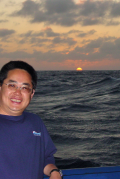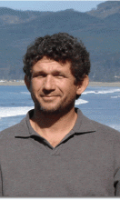Marine Biogeochemistry
Marine biogeochemistry is challenging because chemical concentrations and transformation rates are determined by complex combinations of transport and reaction. To a first approximation, the chemical structure of the oceans is determined by ubiquitous sinking of biogenic particles and local upwelling of solutes regenerated from the chemical and biological dissolution of such particles, but the details are far more intriguing than this broad-brush summary can reveal. Recent topics of particularly active research include the cycling of metals, such as iron and zinc, that constitute essential components of enzyme molecules and whose scarcity can limit phytoplankton production over broad regions of the oceans. They also include the transition area between particulate and dissolved forms represented by colloids and polymers. Problems in rate determination are exceptionally challenging because they often involve complex interactions among biological, physical and chemical processes, making it difficult to identify which steps in transport or reaction are limiting.
Participating Faculty
-

-

Damian C. Brady, Ph.D.
Agatha B. Darling Professor of Oceanography
207.312.8752
-

-

-

Jeremy Rich, Ph.D.
Associate Professor of Marine Microbiology
207.581.5302
-

